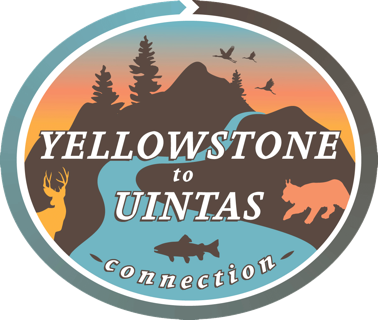Motivational Interviewing - This presentation was given at Y2U's 2018 Successful Activism Training by Dr. David Christian, a clinical psychologist from Logan, Utah. Dr. Christian spends much of his time consulting environmental groups and other advocacy-based organizations on Motivational Interviewing, a technique for building positive relationships between people who don't always see eye to eye. Please email for the PowerPoint slides.
2018 Environmental Legislative Priorities - This presentation was given at Y2U's 2018 Successful Activism Training by Nathan Gilbert, a volunteer with the Sierra Club. It covers environmental legislative priorities for the 2018 Utah State Legislative Session.
Lobbying Skills - This presentation was given at Y2U's 2018 Successful Activism Training by Colin Green, a recent University of Utah graduate who has extensive lobbying experience. The presentation covers several important topics including how a bill becomes a law, strategies for setting up and attending meetings with your representative, etc.
Livestock Impacts - provides a photo narrative of the effects of livestock grazing on our forests, streams with contrasting photos of lands recovering from livestock grazing to show their potential.
Sediment Cores – provides a synopsis of the research Dr. Carter and partners have been conducting to document the current status of spawning habitats for cutthroat and Bull trout in Idaho, Utah and Wyoming. Watershed erosion from livestock grazing and off-road vehicles using our public lands often degrades these habitats and increases mortality to fish eggs and larvae.
Watershed Analysis – provides an overview of our research and the inability of the Forest Service to take into account critical factors when setting livestock stocking rates and locating water developments for livestock. You will see that as a result, this forces livestock to graze and trample lands that are highly erodible. This, in turn, results in erosion rates many times natural rates then leading to loss in water storage capacity, increased flood forces and stream erosion, and sedimentation of trout streams.
Aspen Management – describes the importance of aspen communities and threats by agency management that lead to aspen decline and loss of understory plant communities. It describes the role of predators in promoting aspen health by reintroducing natural ecological factors and provides management recommendations.
Duck Creek Allotment 2005 - This is the original assessment of current forage production and utilization by livestock showing a large reduction from potential production due to overstocking and lack of rest for plants to recover.
Duck Creek Allotment Riparian Monitoring 2008 - An assessment of riparian condition and utilization by livestock showing photodocumentation of numerous locations and stubble heights along the greenline greatly exceeding the standard. BLM never monitored the standard and did away with it after we documented the failure of permittees to ever meet it on any location.
Duck Creek Allotment Riparian Monitoring 2012 - This report summarizes the extreme utilization, stream bank alteration by livestock trampling and greenline stubble height in the second year following implementation of new upland water developments and a four pasture deferred grazing system. Those changes were claimed by BLM to reduce riparian use and allow stream banks to recover. The report documents why those claims were false.
West Fork Blacks Fork – describes sheep grazing and its damage to sensitive meadows, alpine and subalpine basins and resulting effects of flood forces on streams that lead to loss of habitat for cutthroat trout.
